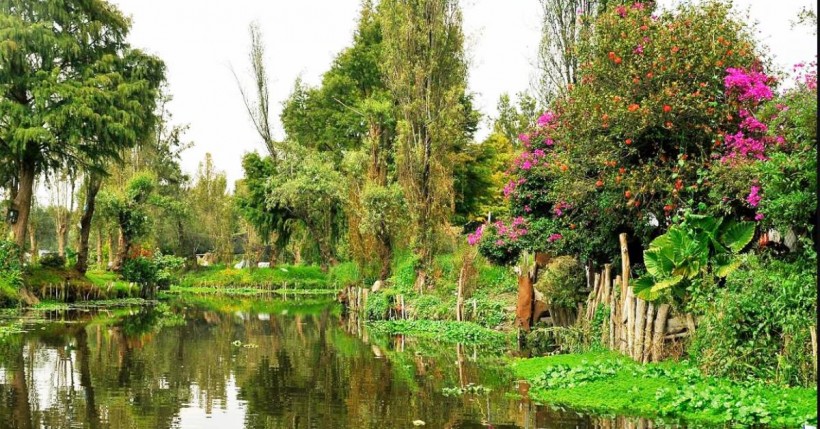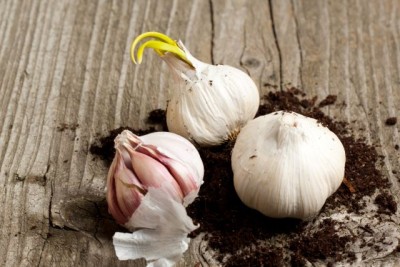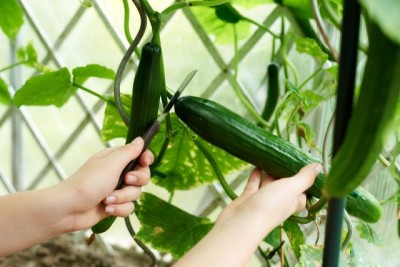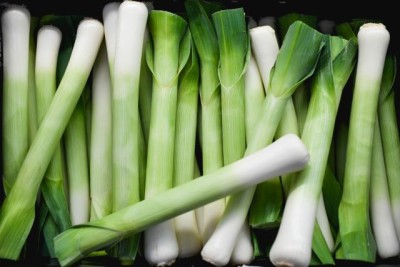The Floating Gardens Of The Aztecs Are Still In Use Today
Warning: Undefined variable $post in /home/dietofli/public_html/wp-content/plugins/code-snippets/php/snippet-ops.php(584) : eval()'d code on line 3
Warning: Attempt to read property "ID" on null in /home/dietofli/public_html/wp-content/plugins/code-snippets/php/snippet-ops.php(584) : eval()'d code on line 3
The estimated reading time is 8 minutes
Warning: Undefined variable $post in /home/dietofli/public_html/wp-content/plugins/oxygen/component-framework/components/classes/code-block.class.php(115) : eval()'d code on line 3
Warning: Attempt to read property "ID" on null in /home/dietofli/public_html/wp-content/plugins/oxygen/component-framework/components/classes/code-block.class.php(115) : eval()'d code on line 3

In the time of global climate changes, floating gardens offer an excellent solution to farmers in areas where flooding dominates the annual weather cycle, and fertile land is not available. It is an innovative form of sustainable farming that doesn't harm nature.
But they are nothing new. In the 15 century, the Aztecs created artificial islands (drafts) using reeds and stakes to create underwater fences in the shallow lakes that were used as gardens. So, today when scientists are frantically trying to save the world from the pollution of the Industrial Revolution, it looks like innovative farming is not a 20-century invention.
When Was The First Floating Garden Created?
Long before the European colonists set up a foot in the Americas, the Aztecs pioneered in agricultural engineering and their floating garden was used for centuries in Central America and in which is today known as Mexico. These floating systems were constructed in the 12 century around the lakes and it is believed around Lake Chalco, Lake Texcoco, and Lake Xochimilco. The first chinamps date from the Middle Postclassic periods, about 1250 CE. Some archeological evidence shows that it is probable that Aztecs took over this gardening technique from another civilization they conquered because the Aztec empire was formed in 1431.
Why Did The Aztecs Create The Floating Gardens (Chinampas)?
Agriculture along with trade and tribute were the basic pillars of the Aztec Empire. As the Empire grew, feeding the urban population was one of the problems of major importance, and most of the population was involved in planting and cultivating the Empire's food.
Moreover, the ancient capital of the Aztec Empire, Tenochtitlan (today's New Mexico), was the biggest city globally.
To feed the enormous population, the Aztecs built chinampas or floating gardens across the surface of the lakes that were, at that time, a masterpiece of engineering. One of the most obvious reasons they were created was the economic use of the land. (1)
The plants that were planted there were constantly and passively irrigated. The willow trees that surrounded the floating gardens controlled the erosion and seed nurseries. They rotated the plants throughout the year and produced up to 7 separate harvests. Moreover, these floating gardens sustained food production throughout the whole year, through the varying seasons of the Mexican climate, and by building floating farms on freshwater, they were able to survive a dry season.
The Floating Garden Was Planted On Water Surface
The Aztecs built floating gardens chinampas on the surface of the lakes. They were colorful and lush, and each garden was surrounded and held by trees and then anchored to the bottom of the lake.
How Did The Aztecs Make A Floating City?
When Hernan Cortez arrived in what is known today as Mexico, he was amazed by the grandeur of the Aztec city Tenochtitlan (today's New Mexico), and what was the most striking of all, its location. The city was located in the middle of Lake Texcoco.
The lake had more canals than Venice and there were many canoeing villagers that were fishing, and bringing food to markets and to the floating garden farms on the lake. These floating gardening farms were created using the fertile soil of the lake and were called Chinampa (Nahuatl languages: chināmitl [tʃiˈnaːmitɬ]).
The Floating Garden Worked On Principles Of Hydroponic Gardening
Chinampas work via the principles of hydroponic gardening.
Aztecs built up the soil in the shallow lake until it was high enough to grow plants on it. The soil was usually formed from mud, dirt and decaying vegetation and the dirt rejuvenated the nutrient levels and kept the waterways clear. The floating gardens provided optimal water retention, and the seeds were planted inside the dirt, as the dirt was fertile and enriched with diverse bacteria, so the harvests were usually bountiful. They usually planted seeds inside, usually of the three main ingredients of the Aztec diet: corn or maize, squash, and beans.
These crops assist each other when grown together. For example, the corn stalks provide support for bean plants and the whole production gave 7 yields per year.
They also farmed a few vegetables such as avocados, limes, onions, peanuts, sweet potatoes and jimacas, tomatoes, chili peppers, and squash.
Aztecs also cultivated cacti, more precisely the maguey cactus or the Mexican aloe that provided them with rope, cloth, needles, and a fermented beverage from its sap.
The lakes produced one crop favored by these ingenious civilizations, one alga which is very much appreciated today - spirulina. Moreover, they planted colorful flowers used in ceremonies, so you can imagine how colorful and lush these floating gardens were.
This whole gardening system extended for 22.000 acres and one floating farm averaged about 100-200 meters long and was about 6-10 meters wide. Birds and fish populated the water and were an additional source of food.
The canals served as streets and worked perfectly with heavy canoe traffic. A whole gridwork of land streets and canals was made on one irregularly shaped island. The network of the canals was connected with bridges and every block was easily accessible from another.
In addition, a drainage system was invented and it was multi-purposed. The Aztecs usually created a ditch to accumulate the mud and to allow the water flow and sediments. This also helped avoid floods during the rainy seasons.
Farming families lived on the earthen platforms near the floating gardens in houses made of mud, cane and reeds. One garden was usually farmed by 10 – 15 people, which depended on the size of the garden.
How Did The Aztecs Keep The Chinampas From Floating Away?
They usually planted willow or cypress trees at the corners of the floating gardens to secure them. Sometimes they were anchored to the bottom of the lake.
Floating Gardens Were Destroyed By The Spaniards
The floating gardens could have been seen from the top of the stone pyramids, where the victims were sacrificed to please Gods and to plea for another fruitful and boastful harvest. Thousands of sacrifices were made, but in the end, it was not Gods who made the final judgment, but it was the Conquistadors who destroyed the floating gardens by order of Hernan Cortez, who was not very interested in gardening techniques.
The Chinampas Benefits
According to one study conducted by the Montana State University, chinampas could meet modern society's needs and are still practiced in some suburban areas in Xochimilco, Mexico.
The study showed the following benefits of floating gardens:
- It could provide extremely high productivity, while the irrigation needs of this farming technique are quite low.
- They do not need to be watered as the plant root systems are under.
- The ground is constantly moist because it is evaporated by the water coming upwards with the help of capillary action.
- It offers an increased biodiversity and greenhouse gas sequestration.
- Very high sustainability, good regulation of the water level and water filtration.
- Microclimate regulation (an amazing combination of water and trees is a brilliant strategy).
- It is a very good perm culture design that turns waste into resources with minimal work and boastful yields.
- This gardening technique is successful because of the diversity of species used on the plant beds.
- It has a presence of a reliable source of water, valuable in the era of climate change.
Chinampas Disadvantages
The main disadvantage of this type of gardening is the flooding that can flood the crops very easily.
Chinampas Are Still In Use today
It is an ancient Aztec farming technique that can be used today as the big cities face similar challenges with a rapidly growing population. Today many agricultural developers promote complex vertical farms, but it is really worth trying the masterpiece of engineering of our ancestors, the floating gardens.
It is currently in use in highland and lowland Mexico and Amazon, Guatemala, and the Andes. In the middle of the pandemic, food shortages began to reveal the real interest in this old gardening tradition.
In Mexico City, the chinampas farmers are trying to fulfill the food demand, and of course, they are attracted to this type of gardening by tourism. Tourists traveling to Mexico City visit the Xochimilco Ecological Park to float the canals aboard trajineras, small boats painted in colors where the tourists can enjoy the lake picnics. Moreover, people in South America are getting closer to their pre – Hispanic roots.
Similar types of gardening can be found in some other world areas, such as Pakistan and India, as the region lacks arable land.














